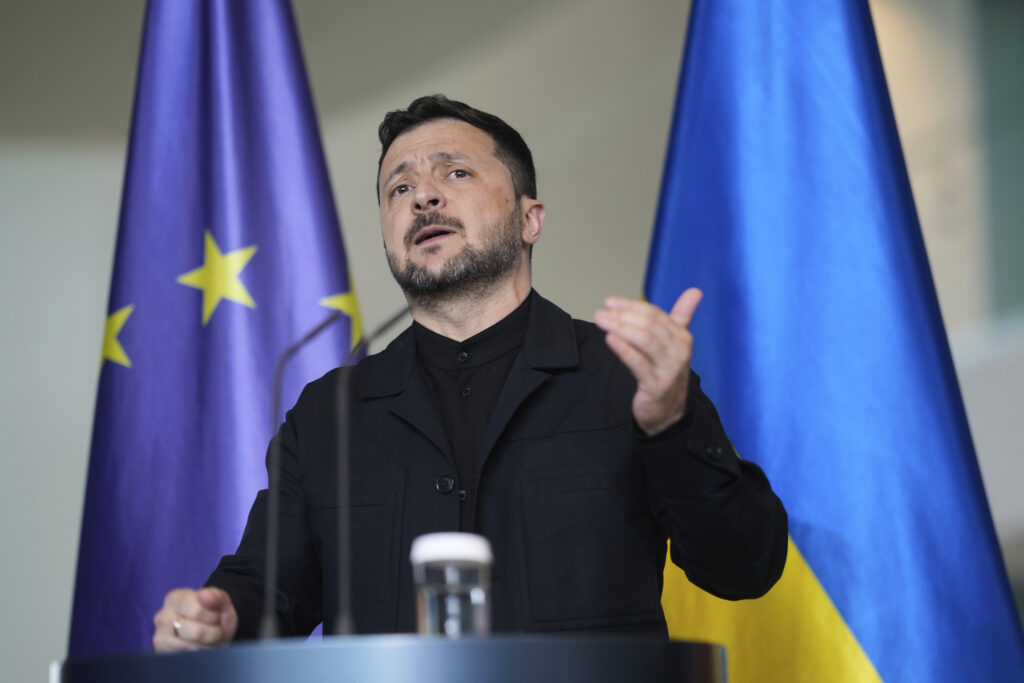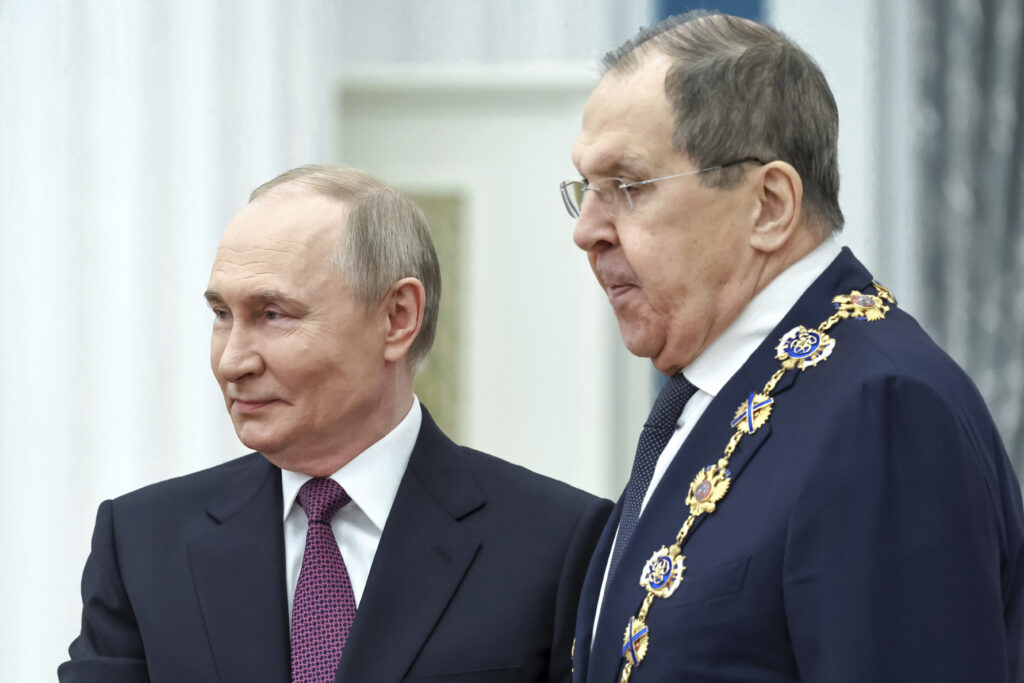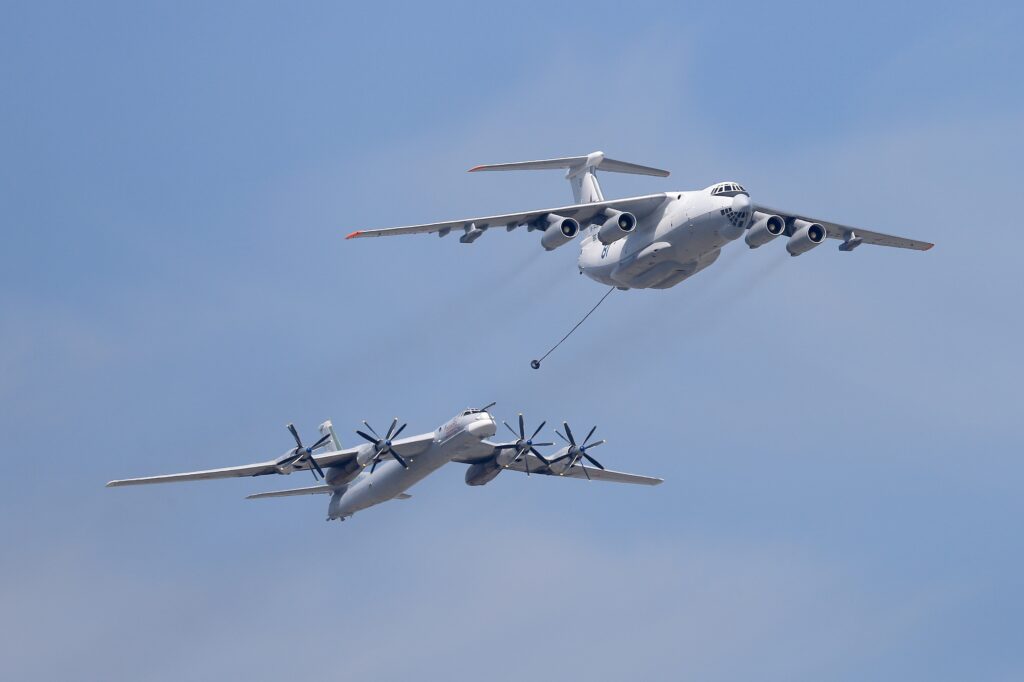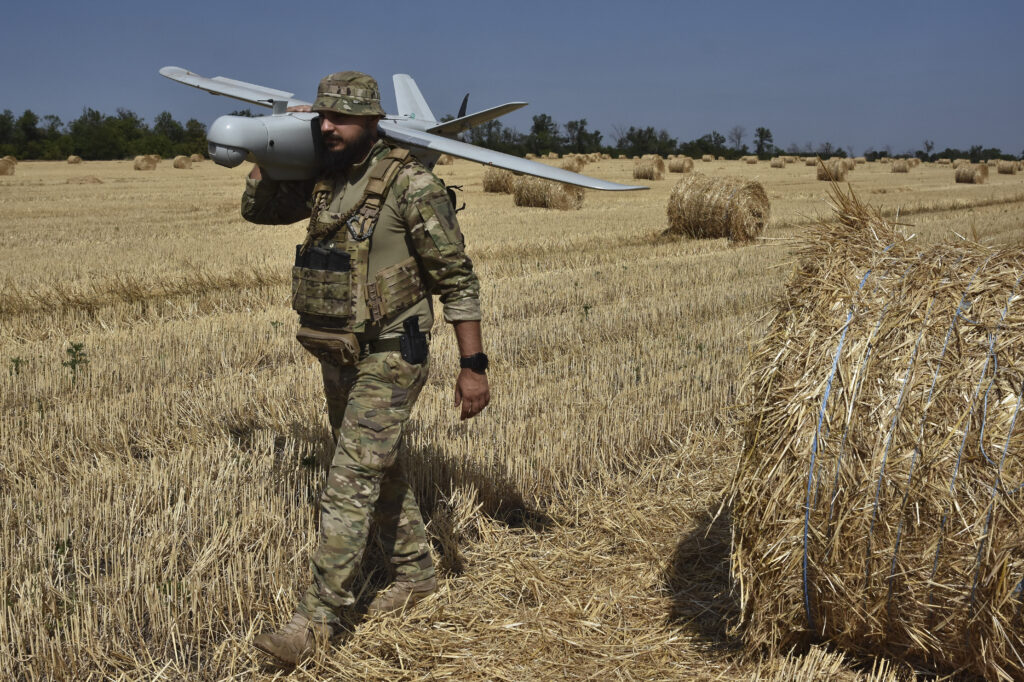Russian and Ukrainian negotiators sit down for peace talks today at Istanbul with the Russian side smarting from one of the biggest military blows of the three-year-long war. After smuggling 150 drones and 300 bombs thousands of miles inside Russia, Ukraine hit four long-range bomber bases yesterday.
Flying in broad daylight in simultaneous strikes, swarms of small quadcopters destroyed or damaged “34% of the strategic cruise missile carriers,” President Zelensky claimed on Telegram. Many of the 41 bombers were of the Tupolev family, planes that no longer are produced. Also damaged were several of Russia’s rare A-50 airborne early warning and control aircraft. These attacks will not only cut the cruise missile threat to Ukraine, but will cut Russia’s force projection worldwide.
“It is impossible to restore these losses,” lamented Rybar, a pro-Kremlin Telegram channel with links to Russia’s Defense Ministry. Noting the losses of Tu-95 strategic bombers, turboprops that went out of production 30 years ago, he described yesterday’s attacks as a “very sensitive” blow to Russia’s nuclear triad.

For Russia’s military, yesterday saw the biggest blow of the war since the day three years ago when Ukrainian missiles sank the flagship of Russia’s Black Sea Fleet, Moskva. June 1, 2025, “is a day that may go down in modern history as the ‘Russian Pearl Harbor’” Russian military blogger Roman Alekhine wrote on Telegram. He blamed corruption in Russia’s Defense Ministry, shortage of money for Russia’s FSB spy agency, general “sloppiness,” and “underestimation of the enemy and weak intelligence.”
Rubbing Ukrainian salt in Russian wounds, Mr. Zelensky gloated on Telegram about this massive intelligence failure for a police state: “The ‘office’ of our operation on Russian territory was located directly next to FSB headquarters in one of their regions.” The man behind “Operation Spiderweb,” Lieutenant General Vasyl Malyuk, pointedly noted that June 1 is celebrated in Russia as “Military Transport Day.”
Eighteen months in preparation, Ukraine’s surprise drone attack ranks in ingenuity alongside Israel’s use of exploding pagers against Lebanon’s Hezbollah last September. For about $1 million in expenses, Ukraine caused $7 billion in damage to Russia’s Strategic Air Force, estimates Ukraine’s domestic intelligence agency, the SBU.

“This is what an asymmetric war looks like. This is what the wars of the future will look like,” the deputy head of Ukraine’s presidential office, Iryna Vereshchuk, wrote on Telegram. “This is not a knockout, but a very serious knockdown for the enemy.”
After smuggling drones and explosives into Russia, Ukrainian agents outfitted five truck trailers with wooden compartments. Each trailer contained about 30 battery-powered drones, each armed and primed for takeoff. Russian drivers were hired to haul the trailers to within four miles of the Russian air base perimeters.
All Ukrainian agents then left the country, Kyiv says. Olenya base is 100 miles east of Norway. Ukrainka is 100 miles north of China. Belaya is 150 miles north of Mongolia. Working from outside Russia, Ukrainian officials say, the agents used Russia’s cell phone system to send commands to the parked trailers. Roofs rose. Drones climbed into the Sunday sun like bees from a hive.
In one video, civilians can be seen climbing atop a trailer, trying to beat back drones with sticks and stones. Near Olenya, an eyewitness describes a truck driver running around in panic as drones kept launching from his trailer. In Ukrainka, in the Russian Far East, the system malfunctioned, and the trailer apparently caught fire.
Once in the air, the drones were piloted by autonomous guidance, without human operators. The drones were programmed to attack fuel tanks and planes at their most vulnerable points. One video shows a drone slowly flying over a nuclear-capable bomber. In some videos, the crackle of rifle fire can be heard. But the bases were largely defenseless. At these nuclear bases, air defense was designed to counter long-range, fixed-wing drones, often flying at night. The little quadcopters took their toll. Ukrainian reconnaissance videos and Russian statements confirm that bombers burned.

“Today, the Kyiv regime carried out a terrorist attack using FPV drones against airfields in the Murmansk, Irkutsk, Ivanovo, Ryazan, and Amur regions,” Russia’s defense ministry posted on Telegram, referring to small, radio-controlled drones. “In the Murmansk and Irkutsk regions, as a result of the launch of FPV drones from the territory located in the immediate vicinity of airfields, several units of aircraft caught fire.”
While Russian officials sought to minimize the attacks, Russian military bloggers saw the attacks as a slap in the face.
“This is a reason to launch nuclear strikes on Ukraine,” wrote the author of the Telegram channel “Two Majors.” “An excellent moment to hand over to the Kiev bastards in Istanbul tomorrow not a ‘draft memorandum” but a note declaring war and an ultimatum. With a warning of an imminent nuclear strike in the event of refusal to fully and unconditionally surrender.”
Last night, Russian press outlets reported that an emergency security meeting was underway at the Kremlin. So far in the war, President Putin has been careful about playing the nuclear card. He knows that Russian nuclear missiles have return addresses.

Western reaction is slow in coming. Trump Administration officials reportedly told CBS News that the White House did not know an attack was in the works. Norway’s foreign minister, Espen Barth Eide, was quoted by Norway’s NRK broadcaster saying: “Ukraine is fully within its right to strike military targets across Russia. Unlike Russia, which bombs cities and civilians, Ukraine follows international law.”
Today, Denmark’s prime minister, Mette Frederiksen, spoke approvingly of Ukraine’s feat. Later, at a meeting of Nordic, Baltic and Eastern European leaders, she added: “Russia is a threat to all of us and therefore we need to strengthen our Eastern flank…We have to push for a ceasefire but at the same time we have to do what is needed at the battlefield in Ukraine so they can actually win this war.”
Two retired American military leaders were supportive. “For months, some believed that Ukraine didn’t ‘hold any cards,’” a retired United States Army lieutenant general, Mark Hertling, who served as commander of U.S. Army Europe, wrote yesterday on X. “The coordinated and synchronized attack today, which appears to have decimated much of the Russian air fleet that were based over 4000 km from the front line, is showing that Ukraine certainly has many aces in the hole.”
A retired United States Navy admiral, James Stavridis, who served as NATO Supreme Allied Commander Europe, assessed the reported damage and posted on X: “Vlad is having a very bad day.”
The day got worse as Ukraine last night sent hundreds of drones toward Russia, hitting seven regions, including air bases at three cities: Borisoglebsk, Lipetsk, and Voskresensk. This came after mysterious explosions over the weekend in Western Russia derailed three trains, killing seven people and injuring 69. So far unclaimed, the bombings are suspected to be the work of Ukrainian agents or anti-Putin partisans.
To assert itself in the lead up to today’s ceasefire talks, Russia launched yesterday what Ukraine’s military calls the largest air assault of the war: seven cruise missiles and 472 Iranian-designed Shahed drones. Ukraine claims to have shot down 80 percent of all incoming. One missile that got through hit a military training ground behind Ukraine’s front lines. It killed 12 soldiers and wounded more than 60. The top commander of Ukraine’s ground forces, Mykhailo Drapatyi, offered his resignation over the attack.



